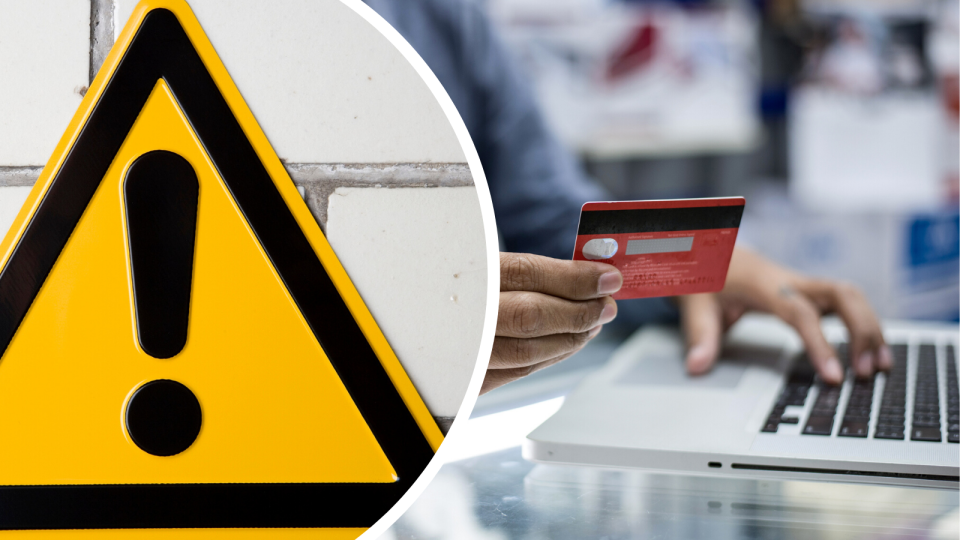7 signs you're addicted to Afterpay

Do you sometimes wonder: Am I Afterpay-ing my future away?
If not, perhaps you should.
A new survey of Australia’s buy-now-pay-later users – 84 percent of which report using largest-player Afterpay – has found three-in-five have bought something they otherwise wouldn’t have, spurred by the ability to pay in instalments.
More from Nicole: How much money it takes to be a millionaire at every age
More from Nicole: The $150,346 rort your big bank doesn’t want you to know
And half of the 2,000 Australian respondents to the survey, by comparison site Mozo, say they spend more than they would if they instead use a credit or debit card - mostly on clothing (32 percent), electronics (19 percent) and home entertainment (13 percent).
Regardless, 50 percent have stopped using a credit card in favour of a delay-pay service. Women are more than twice as likely as men to ‘buy now pay later’, while separate Roy Morgan research indicates Millennials and Gen X make up three-quarters of users.

For you, the $64,000 question – and possibly far more – is: “Have I developed an instant gratification fixation?”
Or perhaps: “Is it even more serious than that?”
Addiction is defined as a compulsion to do something that gives you a short-term benefit but is to your long-term detriment. Here are the seven ‘delay-pay-dependence’ warning signs:
Warning sign 1: You’re more likely to Afterpay than pre-pay
‘Buy now pay later’ is the antithesis of old-school lay-by, when you pay instalments first and bag the goods later. Or simply saving for what you want.
We know that shopping is a natural serotonin-surger and after-paying gives you a ‘free’ hit… with the added psychological incentive – really, just clever marketing – that you’re ‘budgeting’. Every time you succumb, you put more strain on your future finances.
Warning sign 2: You’ve been uncertain you’ll have the money when it’s due
Worryingly, 28 per cent of users have found themselves in financial strife, according to the Mozo survey. Meanwhile, research by the corporate watchdog, ASIC, found 44 percent have an annual income below $40,000. And within this group, two-in-five describe themselves as either students or part-time workers.
With services typically giving you just eight weeks to repay your spend, no one with low or even variable income should use them. That simple.
Warning sign 3: You’ve lost track of your repayments
Twenty-five percent of users have three-to-five payments on the go at any one time, found Mozo’s survey. Worse still, one-third say they’ve missed at least one repayment and 14 percent have missed multiple repayments.
If you’re uncertain of what is due, this is a huge red flag. Speaking of which…
Warning sign 4: You use more than one service
This makes it incredibly hard to keep track of your repayments. But as you may know, there are no credit checks when you apply for most facilities, because most don’t charge interest so slip through the cracks of the national credit code (often they instead make money by taking a cut of the sale price from merchants, say 4 percent, and collecting late fees from consumers).
ASIC is not impressed and released a report late last year that found: “One in six buy-now-pay-later users (16 percent) believed they had experienced at least one type of negative impact due to a buy-now-pay-later arrangement. This included becoming overdrawn, delaying bill payments, and borrowing additional money from family, friend or another loan provider.”
For its part, Afterpay says it starts people low and cuts them off quick it they miss repayments. But all services have innovated outside of the rules and, for now, do not need to comply with responsible lending obligations, so individuals need to stop it from being at their expense.
Warning sign 5: You’ve hooked a facility to a credit card
This is a dreadful idea but Afterpay reports about 15 percent of its users do it. What it means is, if you can’t clear your card in any interest-free period, you will pay interest… and you overnight convert short-term (perhaps impulse) purchasing into long-term pain.
Warning sign 6: You are struggling with debt elsewhere
You. Should. Not. Spend. More. You should instead deploy the money to get back in the black, not slip further behind. As motivation, remember this could save you a small fortune in interest.
Warning sign 7: You hide it from your friends, family or partner
An astonishing 25 percent of users admitted doing this to Mozo, suggesting they are ashamed of their shopping behaviour. Males aged 25-34 were most likely to conceal their purchases, at nearly 35 percent.
But a final word for females (and possibly males too), because ‘beauty’ is the fifth biggest spending category (5 percent). If you use ‘buy now pay later’ for something that’s like a bottomless pit, like cosmetic enhancements, the spend could just go on forever.
To its credit, Afterpay doesn’t allow this, but other services – like Zip Pay (for which there is a $6 monthly fee as well as late payment penalties) – do. Indeed, Laser Clinics Australia recently promoted the ability to “pout now pay later”.
You need to be acutely aware that you could end up injecting the equivalent a house deposit.
Do you need to go into buy-now-pay-later rehab?
Nicole Pedersen-McKinnon is a financial educator and commentator, and the author of How to get mortgage-free like me, available from November 16 at www.nicolessmartmoney.com. Follow Nicole on Facebook, Twitter, LinkedIn, YouTube and Instagram @NicolePedMcKMoney.
Make your money work with Yahoo Finance’s daily newsletter. Sign up here and stay on top of the latest money, property and tech news.

 Yahoo Finance
Yahoo Finance 